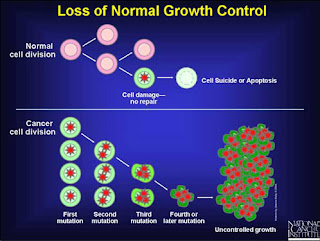A study develops a diagnostic tool to detect depression among cancer people. Various diagnostic methods have been put forward, but all of them use heterogeneous populations without focusing on cancer patients.
Why should we develop a diagnostic tool focusing on cancer patients?
First, it’s necessary to develop a method which can identify depression in cancer patients. The reason is that depression had a negative effect on cancer patients and these depressed cancer patients have a low quality of life and higher risk of death.
Second, previous methods, which use depressive symptoms and don’t focus on cancer patients, are not suitable to deal with depression identification in cancer people. The reason is that the depressive symptoms in cancer patients may be induced by depression and other factors, such as neoplastic progression and its treatment.
What is the diagnostic tool developed in this study?
A model indicating the probability of depression of patients with cancer is constructed using the scores of some of the Ham-D items.
Which items should be selected in the model?
We want to choose a model, which can be used as a diagnostic tool with both high sensitivity (when the cancer patients are truly depressive, the score of the items in the model should be high) and high specificity (when the cancer patients are not depressive, the score of the items in the model should be low) for the diagnosis of depression among cancer patients.
What is the procedure for model selection?
First, we sample four groups of individuals, that is, patients with major depression without cancer, normal-comparison individuals, caner patients with major depression, and cancer patients without major depression.
Second, we divide the 21 items into four groups. They are “positive items”, which are endorsed by depressed patients with cancer but not by cancer patients without major depression, “common items”, which are endorsed by both cancer patients with and without major depression, “neutral items”, which are endorsed by neither cancer patients with and without major depression, “negative items”, which are endorsed by cancer patients without major depression but not by depressed cancer patients.
Third, we fit five models. Model 1 use scores of positive items, model 2 use scores of positive and common items, model 3 use scores of positive and neutral items, model 4 use scores of positive, common and neutral items, model 5, which is reference model, use scores of all 21 items.
Fourth, we plot ROC curve, which is most popular measure of the accuracy of a diagnostic test for 5 models and find that model 2 is the best.
What’s the significance for this model selection procedure?
The model selection procedure is important because this procedure can serve as a prototype to generate valid instruments for the diagnosis of major depression, even other symptoms, in a certain populations.
Which items are included in the final model?
The final model contains “positive items”, which are 6 (late insomnia), 9 (agitation), 10 (anxiety, psychic), 18 (diurnal variation) and “common items”, which are 1 (depressed mood), 14 (genital symptoms).
What’s the significance of this diagnostic tool (final model)?
Since this model has high sensitivity and specificity, it can correctly detect depression in cancer patients. Thus, depression in cancer patients can be detected and treated at an early stage.
The researchers should ensure that adequate statistical and subject-matter expertise is both applied to the study. Moreover, researchers shouldn't predetermine the outcome when they apply statistical sampling.
The researchers should ensure that adequate statistical and subject-matter expertise is both applied to the study. Moreover, researchers shouldn't predetermine the outcome when they apply statistical sampling.
Source:
[1]Guo, Y., Musselman, D.L., Manatunga, A.K., Gilles, N., Lawson, K.C., Porter, M.R., McDaniel, J.S. and Nemeroff, C.B.
The Diagnosis of Depression in Patients with Cancer: a Comparative Approach
The Diagnosis of Depression in Patients with Cancer: a Comparative Approach
Psychosomatics, 47: 376-384, 2006.
http://psy.psychiatryonline.org/cgi/reprint/47/5/376?maxtoshow=&HITS=10&hits=10&RESULTFORMAT=&author1=guo&andorexactfulltext=and&searchid=1&FIRSTINDEX=0&sortspec=relevance&resourcetype=HWCIT
[2]Geoffrey,Hamilton Depression Inventory HAM D.
http://www.carepaths.com/hamilton-depression-inventory-ham-d/
[2]Geoffrey,Hamilton Depression Inventory HAM D.
http://www.carepaths.com/hamilton-depression-inventory-ham-d/
Author: Lijia Wang is a first year Ph.D. student in biostatistics department. She is interested in solving problems about public health using statistical methods. She wants to improve her oral and written English.










